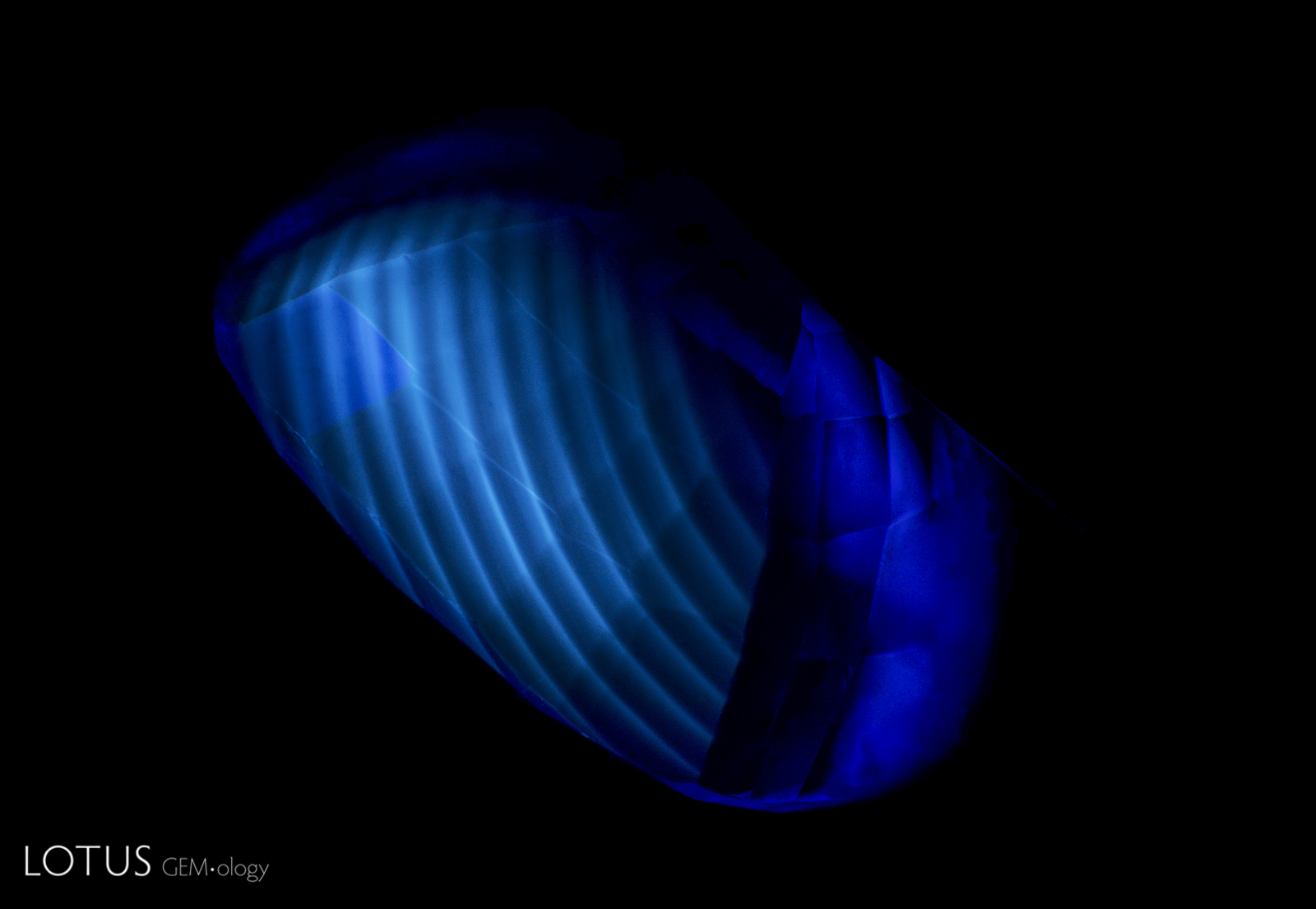Short-wave fluorescent illumination provides a useful tool to spot curved banding in flame-fusion synthetic sapphire.
Figure 1. Curved banding is easily spotted in this flame-fusion blue synthetic sapphire when illuminated with the Magilabs deep-UV fluorescence system, a short-wave UV source. Photomicrograph by E. Billie Hughes; field of view ~13 mm.
Most synthetic ruby and sapphire on the market is grown by Verneuil flame fusion. It can usually be separated from natural corundum by its distinctive curved banding, in contrast to the angular zoning seen in natural stones. Gemologists may see these features in the microscope when using darkfield or brightfield illumination. This zoning can also be seen with use of a short-wave fluorescent light, as noted in Ruby & Sapphire: A Gemologist's Guide (R.W. Hughes et al., Lotus Publishing, Bangkok, 2017).
Figure 2. Observed with a short-wave UV light source, the sample displays curved banding, a telltale sign of a flame-fusion synthetic sapphire. Photomicrograph by E. Billie Hughes; field of view ~24.5 mm.
Recently the author noticed two excellent examples. When viewed with the Magilabs deep-UV fluorescence system (a proprietary short-wave UV source), the curved banding in the synthetics was clear (figures 1 and 2), allowing them to be easily separated from natural corundum. Gemologists using a DiamondView may see the same reaction.

About the Author
E. Billie Hughes visited her first gem mine (in Thailand) at age two and by age four had visited three major sapphire localities in Montana. A 2011 graduate of UCLA, she qualified as a Fellow of the Gemmological Association of Great Britain (FGA) in 2013. An award winning photographer and photomicrographer, she has won prizes in the Nikon Small World and Gem-A competitions, among others. Her writing and images have been featured in books, magazines, and online by Forbes, Vogue, National Geographic, and more. In 2019 the Accredited Gemologists Association awarded her their Gemological Research Grant. Billie is a sought-after lecturer and has spoken around the world to groups including Cartier and Van Cleef & Arpels. In 2020 Van Cleef & Arpels’ L’École School of Jewellery Arts staged exhibitions of her photomicrographs in Paris and Hong Kong.
Notes
This article first appeared in Gems & Gemology, Summer 2019, Vol. 55, No. 2, pp, 264–265.



